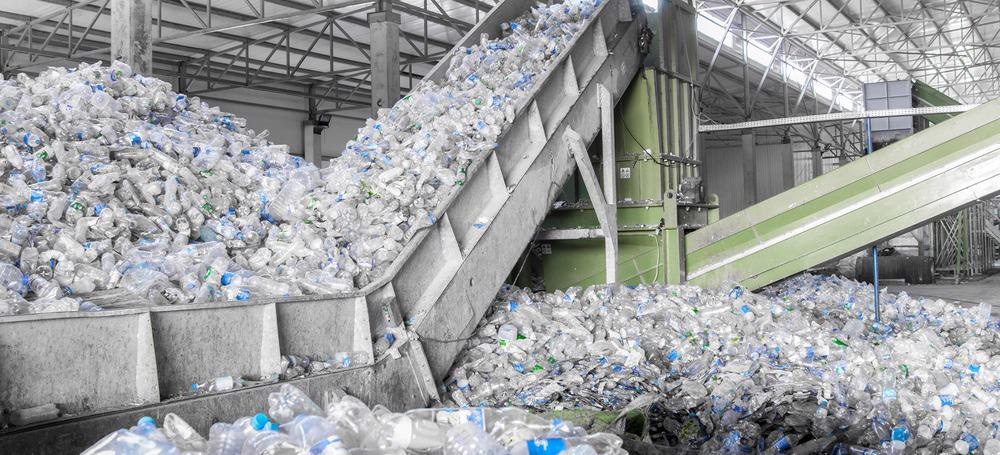
Image Credit: Alba_alioth/Shutterstock.com
Biofabrik and ENESPA AG have recently announced the world’s first WASTX Plastic unit, which will be the largest plastic recycling plant on the planet.
Mechanical Recycling of Plastics
It is estimated that only around 9% of the plastic waste produced by the United States gets recycled each year, with Europe recycling only slightly more at approximately 15%. Considering the fact that 35.7 million tons of plastics were generated in the year 2018 alone in the United States, there is an urgent need to improve current plastic recycling programs.
The small amount of post-consumer plastic waste recycled in these areas of the world is done so using mechanical recycling technology. More specifically, mechanical recycling can be used to recover plastic materials comprising polypropylene (PP), polyethylene (PE), or polyethylene terephthalate (PET).
Mechanical recycling involves mechanical processes such as grinding, washing, separating, drying, re-granulating and compounding to break down waste into plastic flakes. Once dried, plastic flakes can be used to produce new plastic materials.
Limitations of Mechanical Recycling
While the goal of mechanical recycling is to reduce the production of virgin plastic materials, the quality of reprocessed plastics is often impaired. This limits their incorporation into high-value applications. For example, plastic flakes that have completed cleaning and grinding cycles are often sent to undergo remelting and regranulating processes. During these subsequent processes, high temperatures and shear forces are used to produce the recyclates.
The high-intensity processes required for the reprocessing of plastic materials can cause thermal and mechanical degradation of the polymers. As a result, the chain length and distribution of the polymers are changed, which can significantly alter their crystallinity, mechanical strength, and other physical properties that are required for high-value plastic products.
Since many popular brands are not willing to compromise on the performance of their plastic products, there is a limited utility for mechanically recycled plastics in most consumer plastic products.
Chemical Recycling of Plastics
The inability of mechanical recycling processes to produce globally useful plastic products has therefore led many companies and federal entities to turn to chemical recycling methods instead.
Depolymerization is one type of chemical process that has been used to break PET into raw materials, thus preserving their original properties to allow for their reuse. Leaders of this industry have stated that any type of PET material that undergoes the depolymerization process can be used to make any type of conventional PET product.
The second type of chemical process by which plastic materials can be recycled is pyrolysis. During pyrolysis, plastic waste is converted into diesel and naphtha by breaking long polymer chains into short-chain hydrocarbons. Pyrolysis is typically conducted in low-oxygen environments with operating temperatures that can exceed 400 °C.
Pyrolysis plants are ideal for the recycling of PP and PE plastic products rather than PET, as this type of plastic contains oxygen. While most pyrolysis plants have been focused on converting plastic waste into fuels, chemical companies are hopeful that more plants will transition towards producing naphtha instead, which can be used to produce new PE and PP plastic products.
The Biofabrik and ENESPA Solution
The Biofabrik Group is an innovative company that develops and markets various types of technologies to promote a sustainable future for the world.
For over 10 years, Biofabrik has worked with financial giant ENESPA in Switzerland, Germany, and many other countries worldwide to promote their goal of reducing the destructive mining of raw fossil materials.
To move closer towards achieving this goal, Biofabrik and ENESPA have recently announced the development of their first WASTX Plastic unit.
September 2020: WASTX Plastic: First pilot series plant is ready for delivery
Video Credit: Biofabrik Technologies GmbH/YouTube.com
With an expected start date in the spring of 2021, the WASTX Plastic Unit will be capable of processing up to 1000 kg of plastic each day. With 85% of the plastics recaptured for their transformation into recycling oil, the remaining byproducts will be used as gas to power the WASTX unit.
The WASTX Plastic unit is a modular plastic recycling unit that will utilize pyrolysis processes that will generate 1 liter of recycled oil for every 1 kg of plastic waste.
The unique modular nature of this pyrolysis plant is not only scalable but prevents the system from succumbing to many of the technical issues that often occur in a large-scale plastic recycling facility.
The synthetic oil produced by this modular unit will offer consumers an exceptionally high purity that will eliminate the need for further processing. Some of the key consumers of this new fuel will include incinerator and furnace operators, marine vessels, and heavy plant construction companies.
Future Outlook
Within the United Kingdom, QM Recycled Energy (QMRE) has recently received its first pilot WASTX plastic plant that is currently operating in Longfield, Kent. Biofabrik and QMRE plan to further expand the use of this novel recycling technology to more than 50 additional sites across the UK. Ireland, Saudi Arabia, and Turkey are also looking to harness the WASTX plastic recycling technology in the near future.
References and Further Reading
Plastic has a problem; is chemical recycling the solution? [Online]. Available from: https://cen.acs.org/environment/recycling/Plastic-problem-chemical-recycling-solution/97/i39.
Mechanical Recycling [Online]. Available from: https://docs.european-bioplastics.org/publications/bp/EUBP_BP_Mechanical_recycling.pdf.
Plastics: Material-Specific Data [Online]. Available from: https://www.epa.gov/facts-and-figures-about-materials-waste-and-recycling/plastics-material-specific-data.
WASTX Plastic: World’s biggest factory of chemical recycling announced [Online]. Available from: https://www.pressebox.de/pressemitteilung/biofabrik-technologies-gmbh/WASTX-Plastic-Worlds-biggest-factory-for-chemical-recycling-announced/boxid/1047245.
Our Mission [Online]. Available from: https://biofabrik.com/en/company/.
WASTX Plastic: Closing the Plastic Loop with a New Era of Recycling [Online]. Available from: https://www.azocleantech.com/article.aspx?ArticleID=1167.
Disclaimer: The views expressed here are those of the author expressed in their private capacity and do not necessarily represent the views of AZoM.com Limited T/A AZoNetwork the owner and operator of this website. This disclaimer forms part of the Terms and conditions of use of this website.